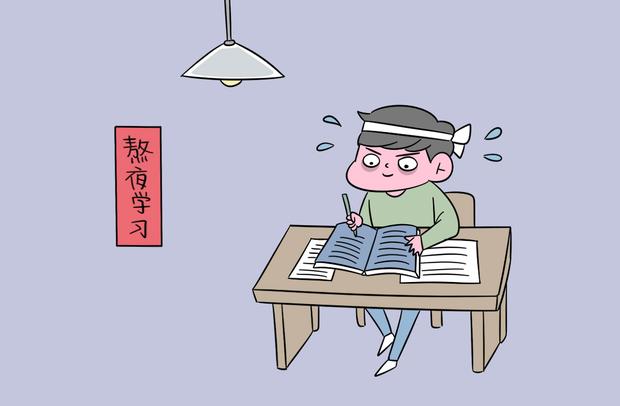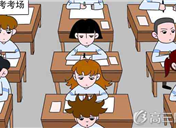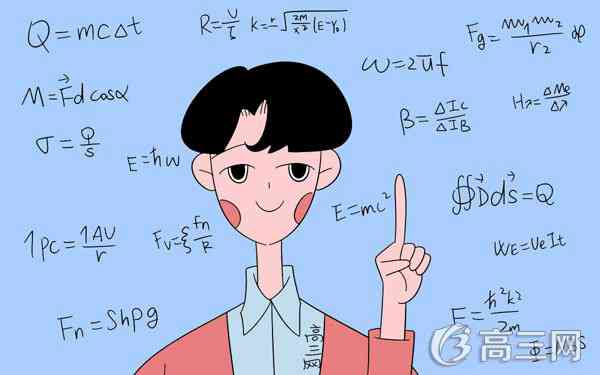2022年江苏提前招生英语模拟试题
2021-12-06 13:24:12文/丁雪竹第I卷(选择题 共85分)
第一部分:听力(共两节,满分20分)
做题时,先将答案标在试卷上。录音内容结束后,你将有两分钟的时间将试卷上的答案转涂到答题纸上。
第一节(共5小题;每小题1分,满分5分)
听下面5段对话。每段对话后有一个小题,从题中所给的A、B、C三个选项中选出最佳选项,并标在试卷的相应位置。听完每段对话后,你都有10秒钟的时间来回答有关小题和阅读下一小题。每段对话仅读一遍。
1. Who might Jenny be?
A. The man’s secretary. B. The woman’s nurse. C. The woman’s granddaughter.
2. What type of music are the speakers probably listening to?
A. Hard rock music. B. Loud dance music. C. Classical piano music.
3. Where are the speakers?
A. In the United States. B. In Germany. C. In Spain.
4. What does the woman want to do first?
A. Get some money. B. Mail a letter. C. Go home.
5. How is the woman learning about computers?
A. From a textbook. B. By using a computer. C. By listening to lectures.
第二节(共15小题;每小题1分,满分15分)
听下面5段对话或独白。每段对话或独白后有几个小题,从题中所给的A、B、C三个选项中选出最佳选项,并标在试卷的相应位置。听每段对话或独白前,你将有时间阅读各个小题, 每小题5秒钟;听完后,各小题将给出5秒钟的做答时间。每段对话或独白读两遍。
听下面一段对话,回答第6至7题。
6. Why can’t the woman read?
A. She caught a cold. B. The man is making noises. C. She is tired from waking up early.
7. Who locked the man out?
A. A cat. B. The woman. C. The man’s pet dog.
听下面一段对话,回答第8至9题。
8. What does the boy refuse to have at first?
A. The fruit. B. Some milk. C. The sandwich.
9. How does the woman get the boy to eat?
A. By tricking him. B. By giving him candy. C. By letting him watch TV.
听下面一段对话,回答第10至12题。
10. Where did the man last work?
A. At Donut Delight. B. At Al’s Garage. C. At Hill and Dale.
11. What does the woman’s company deal with?
A. Salespeople training. B. Furniture. C. Food.
12. What type of meeting are the speakers having?
A. A job interview. B. A sales meeting. C. A training session.
听下面一段对话,回答第13至16题。
13. Where are the speakers?
A. Inside the new mall. B. In a parking lot. C. On the street.
14. What can we learn about the woman’s car?
A. It’s silver. B. It has two doors. C. It has broken down.
15. Who helped the woman find her phone book?
A. James. B. Bianca. C. Her son.
16. What will the man probably do next?
A. Continue walking to town. B. Fix the woman’s window. C. Continue his drive to town.
听下面一段独白,回答第17至20题。
17. How much natural scenery can be found in Berlin?
A. Around half of the total area.
B. About one third of the total area.
C. About one fifth of the total area.
18. What can we learn about transportation in Berlin?
A. There aren’t many choices.
B. Many people use bicycles to get around.
C. Cars are popular but trains are preferred.
19. What makes Berlin a desirable location for international film productions?
A. The natural scenery. B. The historic spots. C. Its urban setting.
20. What has developed in the last decade in Berlin?
A. Film festivals.
B. Orchestras and universities.
C. A music, dance, and art scene.
第二部分:英语知识运用 (共两节,满分35分)
第一节:单项填空(共15小题;每小题1分,满分15分)
请认真阅读下面各题,从题中所给的A、B、C、D四个选项中,选出最佳选项,并在答题纸上将该项涂黑。
21. There is only one way to happiness and that is to ________ worrying about things which are beyond the power of our will.
A. cease B. recall C. acknowledge D. guarantee
22. Between 2014 and 2017, courts nationwide ________ 1,529 cases in which defendants were accused of using the Internet to interfere with a person’s privacy.
A. have heard B. had heard C. have been hearing D. heard
23. Towering over the surrounding buildings ________ the Suning skyscraper, which reaches nearly 400 meters in height, making it a new landmark of Zhenjiang.
A. are B. has C. is D. have
24. The recently-released movie Youth ________ the memories, good and bad, of those who were born around the 60s of the last century.
A. calls up B. steps up C. keeps up D. makes up
25. Volunteers and charities, as well as many churches, arrange meals for the homeless and those who ________ otherwise be alone on Christmas Day.
A. can B. should C. would D. may
26. Since livestreaming platforms are ________ much of our economy’s value is created, anything that improves them matters a lot for the new economy’s overall health.
A. when B. where C. what D. that
27. —This is the third time he ________ for his voluntary work for the Red Cross.
—No wonder he is so excited!
A. has praised B. had been praised C. has been praised D. had praised
28. What to wear in winter? The look of queens and princesses around the world may give you some ________, which are elegant and also attainable.
A. interpretations B. inspirations C. innovations D. invitations
29. A report finds millions of children still are missing out on the benefits offered by the Internet and calls on these inequalities ________.
A. to be addressed B. addressing C. being addressed D. to address
30. Science involves imagination and creative thinking so as to establish scientific theories. ________, Einstein is one of the most outstanding scientists.
A. In this case B. By this means C. With this method D. In this regard
31. We see Jesus in the children of unemployed parents, ________ struggle to offer their children a secure and peaceful future.
A. whose B. whom C. that D. who
32. Man cannot discover new oceans ________ he has the courage to lose sight of the shore.
A. if B. unless C. when D. since
33. —She’s failed her test again.
—________! Let’s go and give her a hand.
A. What a relief B. She deserves it C. What a shame D. She said it
34. To be ________, they have to think about the future and deal with the problems involving waste water.
A. sustainable B. authentic C. critical D. innocent
35. —If he does you a favor, you should do him a favor.
—Sure. ________.
A. Two heads are better than one B. Short accounts make long friends.
C. Many hands make light work D. One good turn deserves another.
第二节:完形填空(共20小题;每小题1分,满分20分)
请认真阅读下面短文,从短文后各题所给的A、B、C、D四个选项中,选出最佳选项,并在答题纸上将该项涂黑。
A Letter from Earth
Dear Homo Sapiens,
As you mark off another “Earth Day” in your calendars, 36 that for at least 24 hours I remained in your thoughts, I wanted to remind you that I am sick. I’m frightened that 37 I can’t soon receive the appropriate medicine and care I need, my illness will become terminal 38 all cures.
So, I am asking for your help!
Geologists (地质学家) 39 that I have been in 40 for 4.5 billion years. Current estimates show that I have given a home to approximately 8.7 million different 41 . Currently over 7.4 billion of my inhabitants (居民) are one species 42 , you, or Homo Sapiens to be more precise. In millennia gone by, we lived in 43 with one another. Your ancestors would take only what they needed from me and in return nurture and protect my fragile environment.
Like a proud parent, I have watched in wonder as you 44 in abilities and intellect. You have travelled to outer space, developed medical cures for the most troublesome illnesses, built great cities and 45 technology…
But at what cost?
Did I do something to 46 you? Was there a point in our mutual (相互的) history where you 47 that we were no longer equals? Am I only now a commodity to you? Why would you pollute my rivers and oceans? Why would you 48 poisonous smokes into our environment, causing me to 49 ? Surely you would not do this intentionally; it would make no 50 .
I don’t wish to believe that you have become increasingly 51 . I would like to think that you have 52 lost your way, 53 other species have before you. I have faith that like a 54 teenager, you just need the opportunity to return home and visit for a while. Many of you have begun to recycle the waste you consume and look at 55 methods of renewable energy.
If you are not one of these people yet, then I would encourage you to be mindful of me.
Your friend, always
Earth
36. A. worried B. content C. shocked D. anxious
37. A. when B. though C. if D. unless
38. A. within B. against C. under D. beyond
39. A. count B. warn C. decide D. estimate
40. A. existence B. place C. condition D. danger
41. A. organizations B. friends C. species D. pioneers
42. A. in particular B. by accident C. in control D. at present
43. A. agreement B. harmony C. comparison D. line
44. A. evolved B. believed C. decreased D. withdrew
45. A. understood B. analyzed C. abandoned D. mastered
46. A. displease B. satisfy C. explore D. improve
47. A. promised B. decided C. complained D. remembered
48. A. reason B. deliver C. pump D. persuade
49. A. break up B. heat up C. come up D. wrap up
50. A. difference B. profit C. sense D. progress
51. A. greedy B. disappointed C. respectable D. envious
52. A. permanently B. logically C. temporarily D. surprisingly
53. A. because B. as C. but D. for
54. A. confident B. troublesome C. mistaken D. shy
55. A. changeable B. valid C. productive D. alternative
第三部分:阅读理解(共15小题;每小题2分,满分30分)
请认真阅读下列短文,从短文后各题所给的A、B、C、D四个选项中,选出最佳选项,并在答题纸上将该项涂黑。
A
Canada Apprentice (学徒) Loan Basics
The Canada Apprentice Loan is available to help registered Red Seal apprentices cover the cost of their training.
What you need to know

The Government of Canada offers apprentices
registered in a Red Seal Trade apprenticeship program up to $4,000 per period of technical training.
You can get Canada Apprentice Loans for up to 5 periods of technical training.
Your loan will be interest-free for up to 6 years as long as you are confirmed as being registered in a Red Seal Trade apprenticeship program.
You do not have to make any loan payments as long as your loan is in interest-free status.
Eligibility
To be eligible, you must meet all of these criteria:
be a Canadian Citizen, Permanent Resident, or Protected Person;
be registered in a Red Seal Trade apprenticeship program that is designated by the province or territory where you are registered as an apprentice;
be enrolled in block release technical training or the equivalent full-time technical training with an approved technical training provider; and
pass a credit check (required if you are applying for the first time).
You are not eligible if you:
are a high school student;
are an apprentice registered in the province of Quebec;
are receiving a Canada Student Loan for the same technical training;
have been told that you are restricted from receiving a Canada Apprentice Loan or a Canada Student Loan;
have already received funding for 5 periods of technical training; or
have already received 6 years of interest-free status.
56. Who will fail to get Canada Apprentice Loans according to the passage?
A. An apprentice who used to study in the province of Quebec.
B. An apprentice who got the Canadian Citizenship three years ago.
C. An apprentice who has been funded for technical training three times.
D. An apprentice who is looking for an approved technical training provider.
57. The purpose of the advertisement is intended to _________.
A. promote the business of Canadian banks
B. help students in need complete their studies
C. recruit more apprentices for Canadian companies
D. provide apprentices with fund to receive technical training
B

In sports, sometimes a player has to take one for the team. The same appears to be true in the plant world, where reduced individual growth can benefit the broader community. The findings from the University of Michigan’s Paul Glaum and André Kessler of Cornell University help explain the persistence (持续存在) of some plant communities when theory predicts they should go extinct(绝种的).
“We looked at how chemical defense cues (信号) from plants, meant to prevent herbivores (食草动物), can also prevent pollinators,” said Glaum, a doctoral student in the U-M Department of Ecology and Evolutionary Biology. “The surprising model result is that while this can lead to fitness losses for individuals, the population effects can be positive for pollinators and plants under some circumstances.”
Many plants, including the wild tomato species used in this study, produce chemical compounds to repel (排斥) insect pests and other hungry herbivores. But those same chemical defenses can reduce the number of visits to the plant by pollinators such as bees, resulting in less pollination of individual plants and decreased growth.
“Biologists have puzzled over how such a costly defense mechanism (机制) can be maintained in these plant populations,” Glaum said. “How would a plant population with such a strategy persist?” Glaum and Kessler developed a computer model showing that decreased growth of individual plants can benefit overall populations and community resilience (恢复力) by indirectly controlling herbivore population growth. The results introduce mechanisms of persistence into communities previously found to be prone (易于遭受的) to extinction in theoretical models.
Tomatoes and other plants produce repellent chemicals called volatile (易挥发的) organic compounds in response to herbivore attacks. The presence of these so-called herbivore-induced volatile organic compounds can make the plant less attractive to pollinators, which can reduce pollen deposition (沉淀物) and negatively affect individual plants, an effect known as herbivore-induced pollinator limitation.
Previous modeling studies have looked at the direct effects of herbivory on a three-species community: flowering plant, pollinator and herbivore. Some of those studies predicted extinctions because growing herbivore populations would reduce the number of plants, limiting resources available to pollinators. In response, the pollinator population would decline, lowering plant reproduction.
58. According to the passage, the persistence of some plant communities may depend on __________.
A. chemical defenses of plants B. increased individual growth
C. reduced chemical compounds D. defense mechanisms of pollinators
59. The underlined word pollinator in Paragraph 2 probably refers to __________.
A. a kind of insects that help plants reproduce B. a kind of animals that eat plants
C. a process of forming a plant community D. a chemical that does harm to plants
60. Volatile organic compounds are __________.
A. less attractive to pollinators B. able to have negative effects on individual plants
C. known as herbivore-induced pollinator limitation D. chemicals produced by plants to attract herbivores
C
Most of us are already aware of the direct effect we have on our friends and family. But we rarely consider that everything we think, feel, do, or say can spread far beyond the people we know. Conversely (相反地), our friends and family serve as conduits (渠道) for us to be influenced by hundreds or even thousands of other people. In a kind of social chain reaction, we can be deeply affected by events we do not witness that happen to people we do not know. As part of a social network, we go beyond ourselves, for good or ill, and become a part of something much larger.
Our connectedness carries with it fundamental implications (影响) for the way we understand the human condition. Social networks have value precisely because they can help us to achieve what we could not achieve on our own. Yet, social-network effects are not always positive. Depression, obesity, financial panic, and violence also spread. Social networks, it turns out, tend to magnify (放大) whatever they are seeded with.
Partly for this reason, social networks are creative. And what these networks create does not belong to any one individual—it is shared by all those in the network. In this way, a social network is like a commonly owned forest: we all stand to benefit from it, but we also must work together to ensure it remains healthy and productive. While social networks are fundamentally and distinctively human, and can be seen everywhere, they should not be taken for granted.
If you are happier or richer or healthier than others, it may have a lot to do with where you happen to be in the network, even if you cannot recognize your own location. And it may have a lot to do with the overall structure of the network, even if you cannot control that structure at all. And in some cases, the process feeds back to the network itself. A person with many friends may become rich and then attract even more friends. This rich-get-richer dynamic means social networks can dramatically reinforce two different kinds of inequality in our society: situational inequality and positional inequality.
Lawmakers have not yet considered the consequences of positional inequality. Still, understanding the way we are connected is an essential step in creating a more just society and in carrying out public policies affecting everything from public health to the economy. We might be better off vaccinating (接种疫苗) centrally located individuals rather than weak individuals. We might be better off helping interconnected groups of people to avoid criminal behavior rather than preventing or punishing crimes one at a time.
If we want to understand how society works, we need to fill in the missing links between individuals. We need to understand how interconnections and interactions between people give rise to wholly new aspects of human experience that are not present in the individuals themselves. If we do not understand social networks, we cannot hope to fully understand either ourselves or the world we inhabit.
61. What can be inferred from the first paragraph?
A. We can’t be easily affected by strangers.
B. We are connected and form a social network.
C. We have negative effects on other social members.
D. We will not make a difference in a specific group.
62. Why is a social network like a commonly owned forest?
A. Because it remains healthy and productive.
B. Because it tends to magnify negative things.
C. Because it is creative and shared by people in the whole society.
D. Because what it creates can be enjoyed by everyone in the network.
63. We can learn from paragraph 4 that ________.
A. whether we are richer depends on the number of friends we make
B. the wealth we possess has nothing to do with individual continuous efforts
C. sometimes our success may be largely due to our position in social networks
D. we won’t succeed unless we fully control the overall structure of the network
64. What’s the author’s purpose in writing the passage?
A. To introduce the characteristics of social networks.
B. To urge people to understand how our society works.
C. To show the significance of understanding social networks.
D. To explain the possible consequences of ignoring social networks.
D
Over the past decade, the growth in high-skilled jobs has largely been limited to Australia’s biggest cities. Meanwhile, in rural and regional Australia lower-skilled jobs have been growing fastest. This skills gap is increasing regional differences in income and employment opportunities, despite the promises of technology and infrastructure as solutions to the tyranny of remoteness.
Our research finds that jobs, particularly the highly skilled, white-collar kind, are becoming increasingly collaborative (协作的). Complex tasks and rapidly changing work environments have increased the need for workers who can collaborate with others to solve problems and who are open to continuous learning. Roles for highly skilled workers are becoming more specialized. This specialization means more collaboration with other specialists and greater space for market positioning.
The productive advantages of cities are self-reinforcing. Skilled workers benefit from the opportunity to learn from and add value with other skilled workers. The coordination (协调) costs of this collaborative work are reduced when team members are co-located.
Employers also benefit from proximity (接近) to similar firms because there is a larger pool of skilled candidates for new jobs and better access to potential business partners. All these advantages encourage further specialization and productivity gains, with the result that workers and business continue to concentrate around large city centers.
The growing skills divide between urban and rural Australia reflects a paradox (悖论) of the digital economy. While digital technology represents a channel for bridging geographic distance, highly skilled workers are increasingly crowding into cities.
The latest census (人口普查) data shows no change in the rate of working from home, despite much-improved digital infrastructure in some areas. In time this may change, perhaps as video conferencing technology improves. However, while better technology might allow regional workers to interact with colleagues and clients in cities, it will also make it easier for city-based professionals to service regional areas.
Employment is still growing in regional Australia. But the fact that cities make highly skilled workers more productive means the gap in skilled employment is likely to continue to widen.
Attempts to swim against this tide by moving skilled jobs to the country will be expensive. Currently, subsidies (补助金) are needed to attract and retain (保留) highly skilled health professionals to regional communities. Despite this, our analysis of the latest census data shows that the skills gap between regions and cities is still growing.
So these subsidies are not translating into sustainable, collaborative communities of high-skilled regional workers. Instead, regions need to focus on their strengths, and foster the entrepreneurship that can create new sources of gainful employment.
The government’s move towards more individualised funding arrangements in the aged care and disability care sectors will increasingly become a resilient (有弹性的) source of income for workers and businesses in regional communities. Demand for aged care services is expected to increase dramatically in the coming decades, such that by 2050 some 3.5 million Australians will require aged care. Adding to this, regional communities are experiencing population ageing at a faster rate than the large capital cities.
These are important jobs which should be recognised as such. There will be opportunities for regional businesses to provide the technology and services (ranging from personalised transport to food services) which allow older people and Australians with disability to remain active and healthy.
Currently people from the regions who are eager for professional careers typically move to the city to study. In many cases they do not return. Here, technology may be part of the solution. Combining specialised online educational resources with good local support teachers could enable students to access a much wider range of courses from regional areas.
Regional communities will also need entrepreneurs (企业家) to develop the future industries and micro-businesses which improve the diversity and resilience of the local economy. However, start-ups and existing businesses are more likely to survive and expand when there is a supportive entrepreneurship ecosystem, including access to relevant skills development opportunities.
65. What is the remarkable characteristic of the high-skilled job?
A. Collaboration. B. Complexity. C. Organization. D. Sustainability.
66. Workers and business continue to concentrate around large city centers in that __________.
A. highly skilled workers increase the coordination costs
B. potential business partners live close to large city centers
C. they encourage self-dependence and increase differences
D. they benefit from specialization and productive advantages
67. What does the underlined sentence in Paragraph 5 mean?
A. Digital infrastructure in some areas have been greatly improved.
B. The lower-skilled workers are likely to have a considerable income.
C. Digital technology doesn’t necessarily bridge the gap in skilled employment.
D. The government will have more support and preferential policies for business.
68. The author mentions “aged care services” to indicate that __________.
A. they lack proper management B. they can bring new jobs to regions
C. they focus on their technical strengths D. they help regions’ funding arrangements
69. What is the key message of the last paragraph?
A. Combining online resources with local support teachers is a good way.
B. Entrepreneurs can improve the diversity to develop their own industries.
C. Regional communities supply sufficient subsidies to pay skilled workers.
D. Supportive entrepreneurship ecosystems play a crucial role in regional areas.
70. What does the passage mainly talk about?
A. Low-skilled jobs have been growing fast in regional Australia.
B. Regional Australia is committed to the development of local economy.
C. The skill jobs gap is increasing between cities and regions in Australia.
D. Highly skilled workers crowd into cities to pursue career development.
第II卷(非选择题,共两大题,35分)
第四部分:任务型阅读(共10小题;每小题l分,满分l0分)
请认真阅读下列短文,并根据所读内容在文章后表格中的空格里填入一个最恰当的单词。注意:每个空格只填1个单词。请将答案写在答题纸上相应题号的横线上。
According to “Time Health”, researchers have found that those who scored highest in a measure of “gratitude scores” were more likely to have less inflammation (炎症), which is often a cause that worsens the symptoms of heart failure. In a study conducted by Paul J. Mills, a professor of family medicine and public health at the University of California, San Diego, patients who kept journals in which they recorded the things for which they were grateful showed reductions in levels of inflammatory biomarkers and an increase in heart rate variability which is considered a measure of reduced cardiac (心脏病的) risk.
Another advantage for those with thankful hearts is a better quality of sleep. When you lie down at night, does your mind hit replay, putting on all the worries and concerns you faced during the day? Still your anxiety by thanking God, one by one, for all the positive aspects of your day. Of course, this is not new advice and did not take a team of researchers to discover.
Joseph Oatman Jr., the pastor (牧师) who wrote the hymn “Count Your Blessings,” discovered this miracle sleep-aid in 1897 when he was 41 years of age. The song became well-loved and Gipsy Smith, one of his contemporaries noted, “Men sing it, boys whistle it and women rock their babies to sleep to it.” It doesn’t seem likely that this familiar hymn will become trendy again today, but maybe we can teach it to our grandchildren. Certainly, we can use its message to remind ourselves of the benefits of recognizing and acknowledging our blessings.
If your best friend had to choose a nickname for you based on your level of gratefulness would it be “Appreciative Amy/Al” or “Thankless Tonya/Tom”? Oh, you say you don’t have a best friend? That is too bad — and may be a sign that you come across as ungrateful. In a 2014 study published in the journal Emotion, it was reported that researchers concluded that showing gratitude helps you make new friends. Conveying gratefulness to others is not only a way to nurture old relationships, but also a method to begin new ones.
This is a no-brainer, but people who are generous with words and expressions of thanksgiving have a healthier outlook (看法) on life than those who feel no need to say “thank you.” It is impossible to be both grateful and negative at the same time. If you feel yourself drifting toward a pessimistic point of view rather than an optimistic one, it may be time to make a list of your many blessings and express heartfelt thanks.
Better health, more restful sleep, good friends and a bright outlook on life are good returns on an investment of taking time to be thankful.
第五部分 书面表达(满分25分)
With their sauces and sachets of dried meat and vegetables, instant noodles were once the bedrock of China’s convenience food, but their sales had declined drastically in recent years.
In 2013, sales of instant noodles on the Chinese mainland surpassed more than 46.2 billion packets, according to the World Instant Noodles Association. However, by 2016 sales had dropped to just 38.5 billion packets.
Zhang Xin, associate professor with department of economics and finance at Tongji University, says the shrinking migrant population has damaged the industry as they were one of the largest groups of instant noodle consumers.
The explosive growth of China’s high-speed railway networks turns out to be unexpected enemy of the instant noodles industry. “Trains were once an important market for instant noodles, but railway stations are ordering less and less instant noodles these days,” says Long Shuhai, an instant noodle distributor in Yunnan Province.
The rise of food delivery has also played a role in the declining fortunes of the instant noodle industry. The instant noodle industry is trying to regain its lost glory through developing more flavors. It is also upgrading products to change people’s perception of instant noodles as a “low-end” product.
【写作内容】
1. 用约30个单词写出上文概要;
2. 用约120个单词就“方便面能否重现昔日辉煌”这一话题,阐述你的看法,并用2~3个理由或论据支撑你的看法。
【写作要求】
1.写作过程中不能直接引用原文语句;
2.作文中不能出现真实姓名和学校名称;
3.不必写标题。
【评分标准】内容完整,语言规范,语篇连贯,词数适当。
英语参考答案
单项选择答案:21-25 ADCAC 26-30 BCBAD 31-35 DBCAD
完形填空答案 36-40 BCDDA 41-45 CABAD 46-50 ABCBC 51-55 ACBBD
阅读理解答案: 56-60DDAAB 61-65BDCCA 66-70DCBDC
作文:(略)
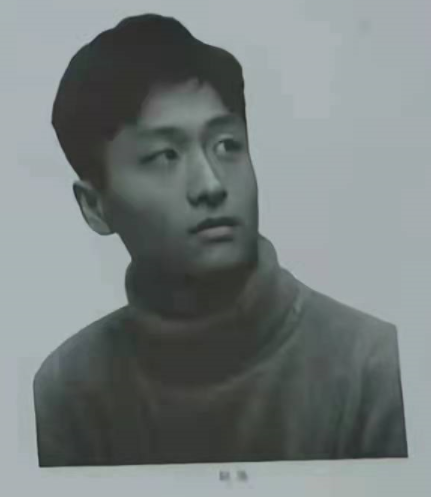 2022年江苏美术联考考试题目是什么
2022年江苏美术联考考试题目是什么2022年江苏美术联考已经结束,联考考试题目:速写...
2021-12-05 江苏2022艺术类专业省统考诚信考试要求 有什么要求
江苏2022艺术类专业省统考诚信考试要求 有什么要求江苏省2022年普通高校招生美术类专业省统考将于1...
2021-12-05 2022江苏艺术统考准考证打印时间及入口 什么时候能打印
2022江苏艺术统考准考证打印时间及入口 什么时候能打印江苏省2022年普通高校招生美术类、广播电视编导专...
2021-11-29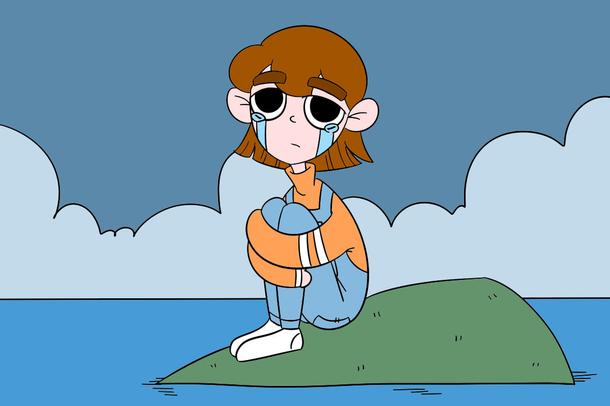 江苏2022年艺术类专业考试通知书和省统考准考证打印入口
江苏2022年艺术类专业考试通知书和省统考准考证打印入口江苏省2022年普通高校招生艺术类专业考试通知书和...
2021-11-29 2022江苏本科大学排名及分数线
2022江苏本科大学排名及分数线为了更好地选择大学,志愿填报时想要报考江苏本科大学...
2021-11-28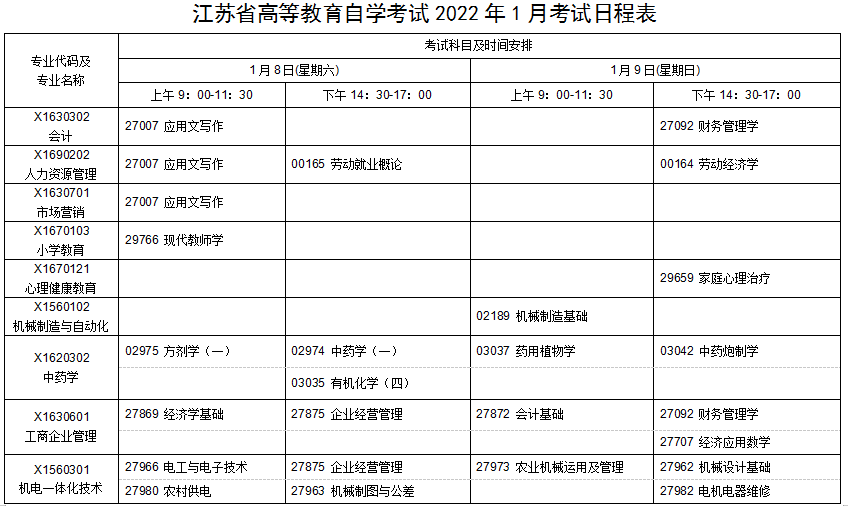 2022年1月江苏自学考试日程表 各专业考试科目具体时间安排
2022年1月江苏自学考试日程表 各专业考试科目具体时间安排江苏省高等教育自学考试2022年1月考试日程表已经...
2021-11-27 江苏省2022年1月高等教育自学考试报名时间及流程
江苏省2022年1月高等教育自学考试报名时间及流程江苏省2022年1月高等教育自学考试报名时间为20...
2021-11-27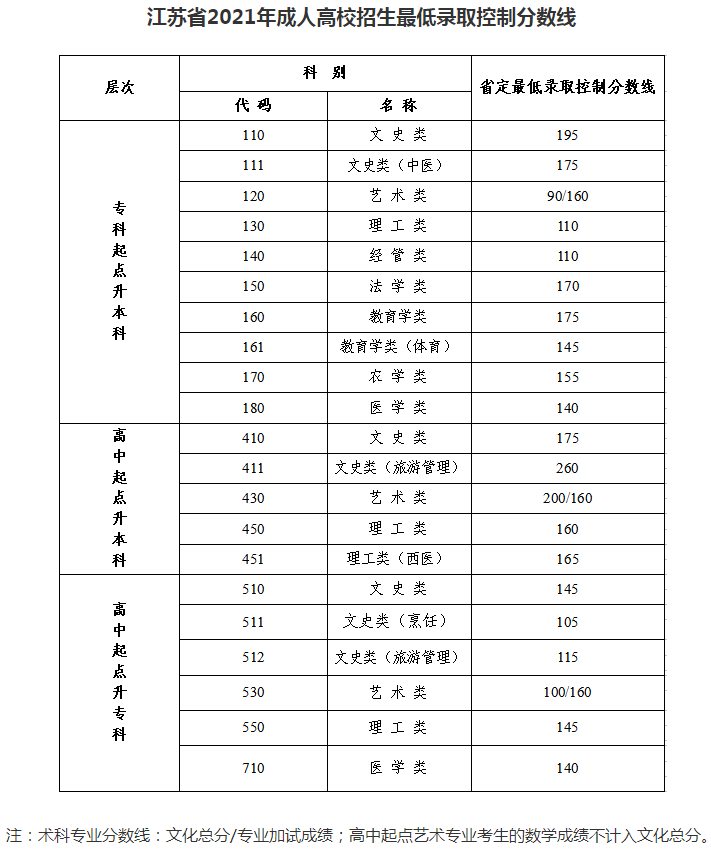 2021江苏成人高考最低录取控制分数线 分数线是多少
2021江苏成人高考最低录取控制分数线 分数线是多少江苏省2021年成人高校招生考试评卷工作顺利结束,...
2021-11-27 江苏2021成人高考成绩查询时间及方法 怎么查成绩
江苏2021成人高考成绩查询时间及方法 怎么查成绩江苏2021成人高考考生可在11月25日17:00...
2021-11-27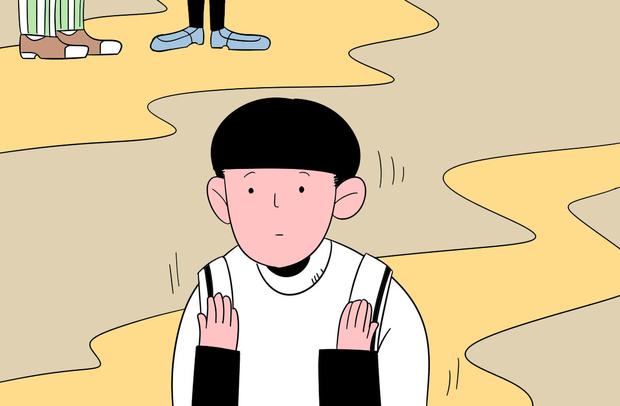 江苏新高考等级赋分制折算表 怎么赋分
江苏新高考等级赋分制折算表 怎么赋分新高考政策《方案》公布江苏新高考采取3+1+2形式...
2021-11-25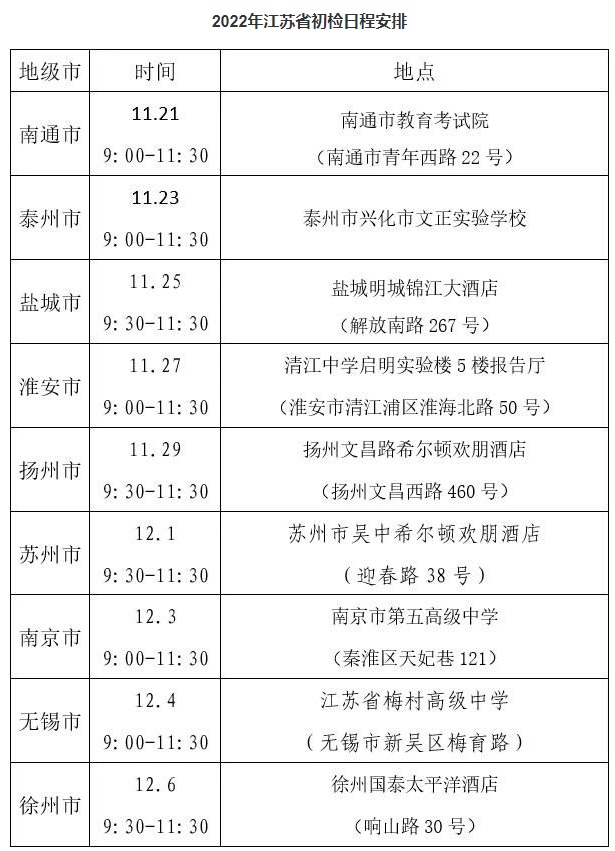 中国民航飞行学院2022年在江苏招飞初检日程安排
中国民航飞行学院2022年在江苏招飞初检日程安排中国民航飞行学院2022年江苏省招飞初检即将开始,...
2021-11-21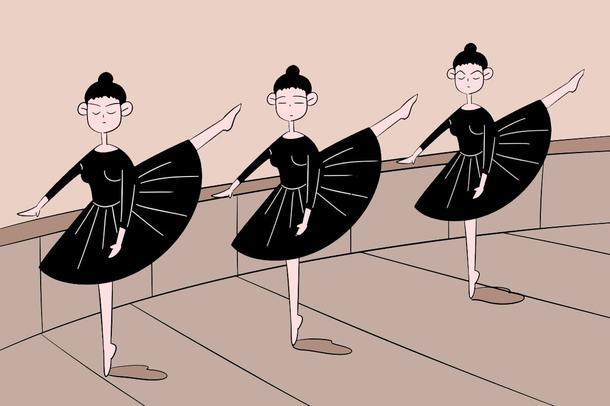 江苏2022年艺术类省统考日程安排 哪天考试
江苏2022年艺术类省统考日程安排 哪天考试江苏2022年普通高校招生艺术类省统考日程安排已经...
2021-11-16 2022江苏艺术统考准考证打印时间 哪天打印准考证
2022江苏艺术统考准考证打印时间 哪天打印准考证参加美术类、广播电视编导专业省统考的考生须于202...
2021-11-15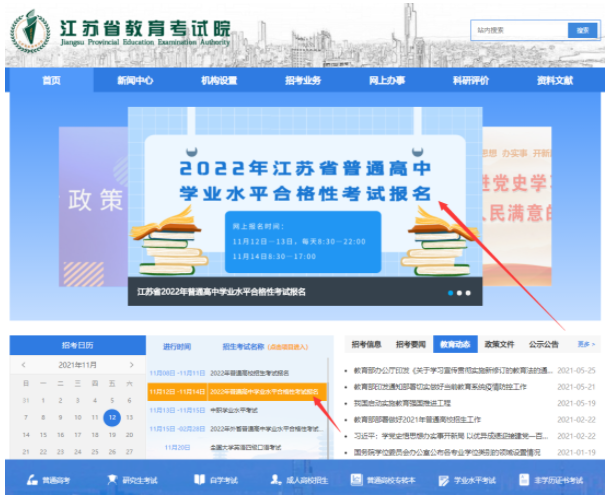 江苏2022高中学业水平合格性考试报名今日截止
江苏2022高中学业水平合格性考试报名今日截止江苏2022年普通高中学业水平合格性考试报名今日截...
2021-11-14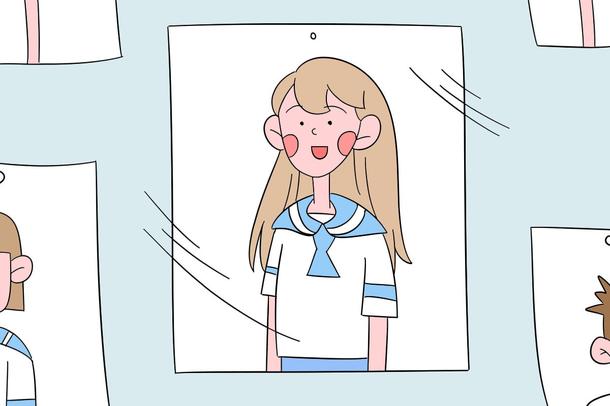 江苏2022艺术类专业省统考防疫要求 考生健康须知
江苏2022艺术类专业省统考防疫要求 考生健康须知江苏省2022年普通高校招生艺术类专业省统考将于1...
2021-11-11
点击查看 江苏高职单招 更多内容




